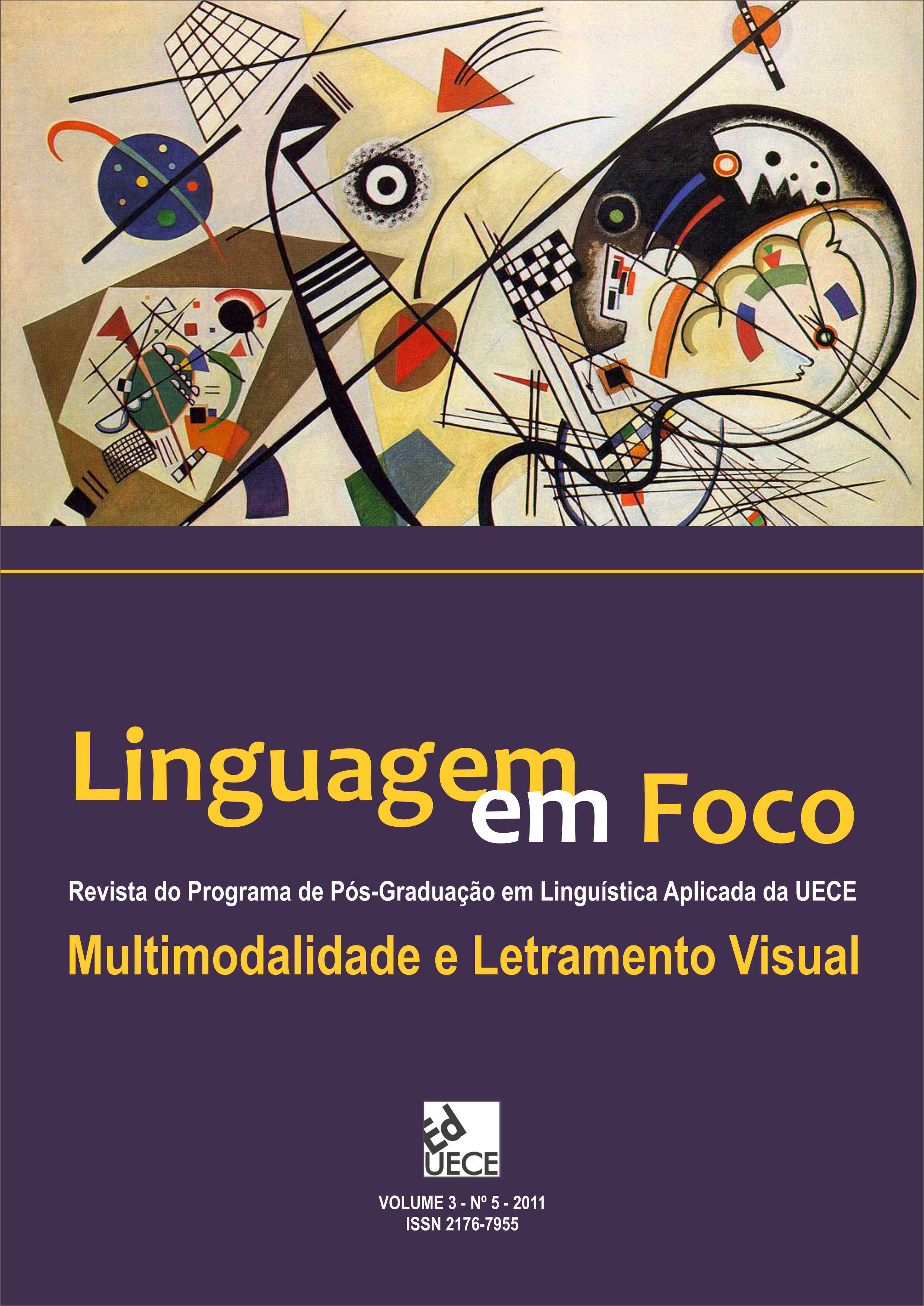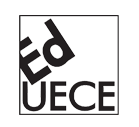MASHING GENRES UP, BREAKING THEM DOWN: LITERACY IN THE AGE OF COPY-AND-PASTE
Mots-clés :
Remixagem, Recontextualização, Coesão, ModularidadeRésumé
O trabalho investiga as práticas de construir significados resultantes da ação de copiar e colar. Quando a representação é produzida através da remixagem, a coesão não é mais um dispositivo necessário para a coerência, enquanto os textos são caracterizados pela combinação modular de temas, vozes, modos e gêneros, juntamente com a intertextualidade aumentada, implicitude e as multicamadas de significados. Textos compostos modularmente são cada vez mais frequentes em todos os contextos, modos e gêneros, enquanto os que são estruturados linearmente parecem essencialmente confinados a alguns gêneros escritos acadêmicos e educacionais. Discutimos exemplos de produções de escrita acadêmica dos alunos que revelam a influência das práticas semióticas baseadas em remixagem. As conclusões deste trabalho oferecem insights sobre as implicações para o ensino / aprendizagem de gêneros escritos.
Téléchargements
Références
ADAMI, E.; KRESS, G. The social semiotics of convergent mobile devices: New forms of composition and the transformation of habitus. In: KRESS, G. (Ed.). Multimodality. A social semiotic approach to contemporary communication. London: Routledge, 2010. p.184-197.
ANONYMOUS. Détournement as Negation and Prelude. Internationale Situationniste, v. 3, p. 55-56, 1956. Available at: < http://library.nothingness.org/articles/all/all/display/315 >.
BAKHTIN, M. The Dialogical Imagination. Austin: University of Texas Press, 1981.
BAKHTIN, M. Speech Genres and Other Late Essays. Austin: University of Texas Press., 1986.
BARD, P. Replay Remix. Afterimage, v. 37, n. 1, p. 2-3, 2009. Available at: < http://ebookbrowse.com/adv.php?q=Bard+%22Replay+Remix%22 >.
BARTHES, R. The Death of the Author. In: BARTHES, R. and HEATH (Ed.). New York: Hill and Wang, 1977. p.142-148.
BENNETT, K. Plagiarism reassessed: A culturalist take on academia’s cardinal sin. The European Messenger, v. 20, n. 1, p. 74-77, 2011.
BEYLOT, P. La télévision au miroir. Paris: Editions L’Harmattan, 1998.
BEZEMER, J.; KRESS, G. Changing Text: A Social Semiotic Analysis of Textbooks. Designs for Learning, v. 3, n. 1-2, p. 10-29, 2010.
BOURDIEU, P. Outline of a Theory of Practice. Cambridge: Cambridge University Press, 1977.
BUCKINGHAM, D. Media education goes digital: An introduction. Special Issue of Learning, Media and Technology, v. 32, n. 2, p. 111-119, 2007.
BUCKINGHAM, D. Childhood 2025 and Beyond: Children, Media and Technology. 2008. Available at: < http://www.beyondcurrenthorizons.org.uk/wp-content/uploads/bch_challenge_paper_
childhood_david_buckingham.pdf >.
DIAKOPOULOS, N. et al. The Evolution of Authorship in a Remix Society. ACM HyperText and Hypermedia, 2007. Manchester, UK.
DOMÈNECH, R. Political satire in Italy: a successful television genre. Quaderns del CAC, v. 27, p. 71-78, 2007.
DUFF, M. Italians find voice and punish Silvio Berlusconi. BBC News Europe 2011.
DYER, R. Pastiche. London/New York: Routledge, 2007.
ECO, U. Sei passeggiate nei boschi narrativi. Milano: Bompiani, 1994.
ERSTAD, O.; GILJE, Ø.; DE LANGE, T. Re-mixing multimodal resources: Multiliteracies and digital production in Norwegian media education. Learning, Media and Technology, v. 32, n. 2, p. 183-198, 2007.
FAIRCLOUGH, N. Analysing Discourse; Textual Analysis For Social Research. London: Routledge, 2003.
GREENBERG, C. Collage. In: GREENBERG, C. (Ed.). Art and Culture: Critical Essays. Boston: Beacon Press, 1961. p.70-83.
HALLIDAY, M. A. K.; HASAN, R. Cohesion in English. Harlow: Longman, 1976.
JACKSON, M. H. Fluidity, promiscuity, and mash-ups: New concepts for the study of mobility and communication. Communication Monographs, v. 74, n. 3, p. 408-413, 2007. Available at: <
http://coms191spring2009.wikispaces.com/file/view/Phan+San+-+Fluidity,+Promiscuity,+and+Mash-Ups.pdf >.
JENKINS, H. Convergence Culture: Where Old and New Media Collide. New York: New York University Press, 2006a.
JENKINS, H. Learning by remixing. 2006b. Available at: < http://www.pbs.org/mediashift/2006/07/learning_by_remixing.html >.
JENKINS, H. What is Remix Culture?: An Interview with Total Recut’s Owen Gallagher (Part One). 2008. Available at: < http://www.henryjenkins.org/2008/06/interview_with_total_remixs_ow.html >.
JENKINS, H. DIY Video 2010: Political Remix (Part One). 2010. Available at: < http://henryjenkins.org/2010/11/political_remix_video_can_empo.html >.
KNOBEL, M.; LANKSHEAR, C. Remix: The Art and Craft of Endless Hybridization. Journal of Adolescent & Adult Literacy, v. 52, n. 1, p. 22–33, 2008.
KRESS, G. AgainstArbitrariness: The social production of the sign as a foundational issue in critical discourse analysis. Discourse and Society, v. 4, n. 2, p. 169-191, 1993.
KRESS, G.; BEZEMER, J. Writing in a Multimodal World of Representation. In: BEARD, R.; MYHILL, D., et al (Ed.). SAGE Handbook of Writing Development. London: Sage, 2009. p.167- 181.
KRISTEVA, J. Desire in Language: A Semiotic Approach to Literature and Art. Oxford: Blackwell, 1980.
LESSIG, L. Remix. Making Art and Commerce Thrive in the Hybrid Economy. London: Bloomsbury Academic, 2008.
LÉVI-STRAUSS, C. La Pensée Sauvage. Paris: Plon, 1962.
MAGRÌ, A. Di Blob in Blob. Analisi di semiotica comparata. Cinema Tv e Linguaggio del corpo. Roma: Aracne Editrice, 2009.
MANOVICH, L. Remixability and Modularity. 2005. Available at: < www.manovich.net/DOCS/Remix_modular.doc >.
MANOVICH, L. The practice of everyday (media) life. 2008. Available at: < www.manovich.net/DOCS/manovich_social_media.doc >.
MOODY, J. Plagiarism or intertextuality?: Approaches to Teaching EFLAcademic Writing Asian EFL Journal, v. 9, n. 2, 2007. Available at: < http://www.asian-efl-journal.com/June_07_jm.php >.
PARADIS, J.; PETTITT, T.; DONALDSON, P. The Gutenberg Parenthesis: Oral Tradition and Digital Technologies. MIT World video lecture. 1 April 2010. 2010. Available at: <http://mitworld.mit.edu/video/775 >.
PERKEL, D. Copy and paste literacy? Literacy practices in the production of a MySpace profile. In: DROTNER, K.;JENSEN, H. S., et al (Ed.). Informal Learning and Digital Media: Constructions, Contexts, Consequences. Newcastle, UK: Cambridge Scholars Press, 2006. p.203-224.
PORCELLI, F. Schegge. La Tv dopo la Tv. Milano: Il Saggiatore, 2007.
PRECKEL, A. Zapping als Fernsehkritik. Die italienische Telecollage Blob. Berlin: Avinus Verlag, 2008.
SAUSSURE, F. D. Cours de linguistique générale. Paris: Payot, 1916/1931.
STALD, G. Mobile identity: youth, identity, and mobile communication media. In: BUCKINGHAM, D. (Ed.). Youth, Identity, and Digital Media. Cambridge, MA: MIT Press, 2008. p.143-164.
SWEENEY, K. Transmedia Remix. Afterimage, v. 38, n. 3, p. 2-3, 2010.
TRUPE, A. Academic Literacy in a Wired World: Redefining Genres for College Writing Courses. Kairos. 7 2002.
VAN DIJK, T. A. Macrostructures. Hillsdale, NJ: Erlbaum, 1980.
VILLANO, M. Taking the work out of homework. T H E Journal, v. 33, n. 15, p. 24-30, 2006.
Téléchargements
Publiée
Comment citer
Numéro
Rubrique
Licence
(c) Tous droits réservés Elisabetta Adami 2019

Ce travail est disponible sous la licence Creative Commons Attribution 4.0 International .
Os autores que publicam na Linguagem em Foco concordam com os seguintes termos:
- Os autores mantêm os direitos autorais e concedem à revista o direito de primeira publicação. Os artigos estão simultaneamente licenciados sob a Creative Commons Attribution License que permite a partilha do trabalho com reconhecimento da sua autoria e da publicação inicial nesta revista.
- Os conceitos emitidos em artigos assinados são de absoluta e exclusiva responsabilidade de seus autores. Para tanto, solicitamos uma Declaração de Direito Autoral, que deve ser submetido junto ao manuscrito como Documento Suplementar.
- Os autores têm autorização para disponibilizar a versão do texto publicada na Linguagem em Foco em repositórios institucionais ou outras plataformas de distribuição de trabalhos acadêmicos (ex. ResearchGate, Academia.edu).

























